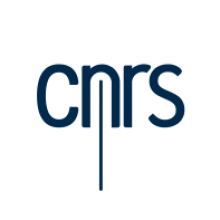Additive Manufacturing Center (watch the video)
Centre de Fabrication Additive (communiqué de presse)
This workspace is a shared tool between the X and ENSTA ParisTech, located at the Laboratory of Solid Mechanics.
It is designed around a Laser Metal Deposition (LMD) 3D printer from BeAM. The new process of manufacturing by adding material, so-called additive manufacturing, allow to design innovative materials and original prototypes that were not conceivable by standard manufacturing processes.
New perspectives for tomorrow's industry and research
This machine opens up new perspectives, whether it is the possibility of designing, manufacturing and optimizing new forms of materials, metal work at the limit of weldability or the addition of innovative functions to existing parts, allowing achieve previously unattainable performances.
Ultimately, this center should allow researchers to design:
• innovative materials by working on new alloys;
• original prototypes for research and industry.
This space will also benefit the students of École Polytechnique and ENSTA ParisTech who will be able to become aware of the challenges of the industry and develop their skills in innovative manufacturing processes.
Long-term collaboration in the field of research
The Directorate General of Armament has confirmed its support for the research of these two schools by providing the bulk of the initial investment. It also benefits from a very high level of expertise for current and future defense technologies. Indeed, a triennial convention of cooperation in research, links the schools to the DGA for many years, which allowed to carry out many research projects.
Funding for this mechanism has also been supported by the André Citroën Chair, one of the objectives of which is to develop themes related to materials and mechanical structures within École Polytechnique's laboratories.
State-of-the-art technology for innovation
How does the 3D metal printer work? Metal powders are injected into the nozzle of the machine to form a homogeneous stream. Crossing the laser beam, the powders are melted. This results in a homogeneous and dense metal deposit with material characteristics located between those foundry pieces and those from the forge. The deposited material is locally protected from oxidation by a neutral gas. The printer then stacks, layer by layer, this metal deposit to create, repair, or add functionality to an existing part from a digital file.
Contact : Eric Charkaluk - Directeur de recherche

